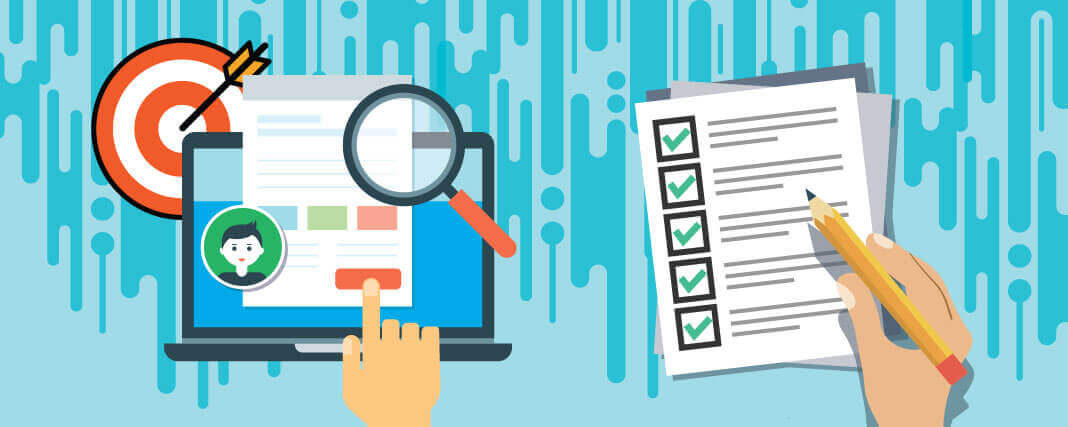Choosing the right HRMS solution and implementing the solution correctly is quite an undertaking. The slightest misstep can cost you heavily. Therefore, to help you, in this article, we have included a general guide and a checklist for selecting and implementing an HRMS solution effectively.
Selecting and Implementing an HRMS Software Solution
Once your company has decided to switch to another HRMS, you will need to form a detailed plan to evaluate your needs and assess the various solutions and vendors in the market. Recent advancement in HRIS software has led to a lot of process automation that could save productive time and resources if you choose the right upgrade.
It’s important to note that it is not just important to choose what seems like the best HRMS software solution. It is also important to partner with a reliable vendor. An HRMS solution such as greytHR is an example of a great product powered by a vendor that is committed to improving and enhancing their products continually.
Guide to Selecting and Implementing an HRMS Software Solution
Take a look at the following steps for selecting and implementing an HRMS software solution effectively:
1. Identify Gaps in the Existing HRMS
The first thing you should do when you’re thinking of upgrading your HRMS systems is to evaluate the current system and establish all its pros and cons. Define all the processes you use in your HR system. Identify the gaps in your current system so that they can be corrected.
Make a checklist of all the steps required by the HR department from pre-hire to exit. Also, list out the team members responsible for these steps and the time needed to complete each step.
Analyze the costs associated with each step and the impact on the organization if these steps weren’t completed. Try to quantify these impact analyses monetarily to make the process more objective and easy to visualize.

Looking for HRMS Software? Check out SoftwareSuggest’s list of the best hrms software solutions.
2. Analyze Requirements
Now develop an ideal model for your HR processes. Determine the features and modules you need in the new HRM Software for your business to maximize the efficiency of the HR department.
Categorize all the daily transactions of the HR team into clearly defined sections and prioritize each transaction based on mission-critical functions that save the time of the HR department. Define all steps in the HR processes such as payroll, time tracking, performance management, and more.
Determine your requirements for the new HRMS and prioritize them. Along with the system capabilities, you will also have to figure out your budget for the new HRMS.
Take into account other factors such as the number of employees in your company, the scale of your operations, and your short-term and long-term plans for business growth.
3. Vendor Evaluation
For shortlisting vendors, create a formal Request for Proposal (RFP). RFP is a list of your requirements in a question-answer format that you will send to your vendors. This will automatically disqualify all the vendors that do not cater to your needs.
Information collected in this manner also paves the way for an objective vendor comparison. This step is optional, but it will save you from getting into unnecessary conversations with vendors that cannot match your requirements.
Zero in on the top HRMS vendors and rank them according to your preference. Invite them to give you a demo. Ensure that you provide each vendor an equal opportunity and that there are no biases involved in the selection. Standardize the evaluation process that you will use for each vendor.
Ask all the vendors the same questions to give them an objective evaluation. Note their answers against predetermined parameters. This will help you make a side-by-side comparison for each vendor.
4. ROI Analysis
It is always essential to do a cost-benefit analysis whenever you consider a new system for your organization. Come up with a quantitative estimate of the savings that you can expect from the new HRMS in terms of time and resources as a result of process automation.
Will the HRMS help you function efficiently with a smaller team? Will the time saved as a result of process automation allow HR team members to focus on more strategic tasks? What kind of impact will that have on your bottom line?
5. Project Plan Development/Implementation
Once the vendor is selected, and the budget is approved, you need a detailed plan for the implementation of the new HRMS. For this, you will have to work closely with the vendor. Form a team consisting of key employees and a representative of the vendor to oversee and execute the implementation process.
Communicate your requirements to the vendor clearly and go into as much detail as possible. Demonstrate the impact and consequences of not meeting these requirements.
Use a detailed document that lists out tasks that are required to be handled at your end and those that must be completed at the vendor’s end. Set deadlines for each task. This will improve accountability on both sides and serve as a map to determine where any delays if encountered, may have occurred.
Analyze the implementation process against your goals and expectations. Collect end-user feedback and make improvements to the HRMS.
HRMS Selection and Implementation Checklist
The following checklist will be handy as you select and implement an HRMS solution. It will help you ensure that you do not miss out on any of the crucial steps discussed in this article.
| Phase 1: Discovery | Check | Comments |
| 1. All processes identified | ||
| 2. All process clearly defined | ||
| 3. Gaps found | ||
| 4. Cost of each step calculated | ||
| 5. Time required by each step calculated | ||
| 6. Impact of each step evaluated (in Rupees) | ||
| Phase 2: Analyze Requirements | ||
| 1. Develop ideal model | ||
| 2. Process flow chart created | ||
| 3. Categorize Transactions | ||
| 4. Prioritize Transactions | ||
| 5. Evaluate other factors | ||
| 6. Define requirements | ||
| Phase 3: Vendor Evaluation | ||
| 1. Create and send RFP | ||
| 2. Select 3 best vendors | ||
| 3. Invite best vendors for demonstration | ||
| 4. Prepare list of questions for vendors | ||
| 5. Compare vendors | ||
| Phase 4: ROI analysis | ||
| 1. Estimate costs of implementation | ||
| 2. Evaluate time saved with automation | ||
| 3. Compare cost/savings | ||
| Phase 5: Implementation | ||
| 1. Form team for implementation | ||
| 2. Evaluate implementation requirements | ||
| 3. Communicate details to vendor | ||
| 4. Decide on phases of roll-out | ||
| 5. Execute the roll-out | ||
| 6. Analyze implementation (user feedback) | ||
| 7. Improve system |
Need Any Technology Assistance? Call Pursho @ 0731-6725516




